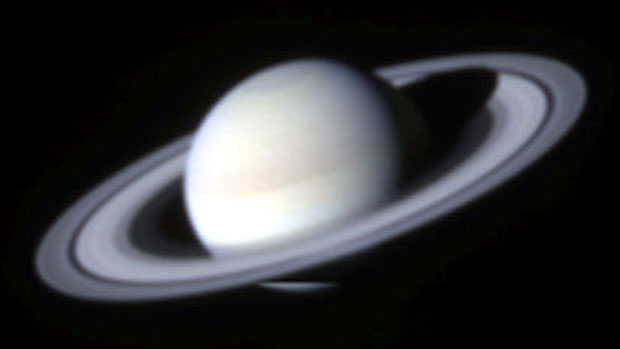Is Saturn about to give birth to a new moon called Peggy?
'We have not seen anything like this before' say scientists, as they spot a bulge in planet's ring

SCIENTISTS believe they are witnessing the formation of a new moon in our solar system for the first time in the history of humanity.
Images from Nasa's Cassini-Huygens space probe show a bulge in Saturn's 'A-ring', the planet's brightest and outermost ring, suggesting that a new moon is being formed there. Scientists say the new arrival, nicknamed 'Peggy', could soon join Saturn's 62 other moons.
"We have not seen anything like this before," said astronomer Carl Murray, lead author of a study in science journal Icarus, which outlined the findings. "We may be looking at the act of birth, where this object is leaving the rings and heading off to be a moon in its own right."
The Week
Escape your echo chamber. Get the facts behind the news, plus analysis from multiple perspectives.

Sign up for The Week's Free Newsletters
From our morning news briefing to a weekly Good News Newsletter, get the best of The Week delivered directly to your inbox.
From our morning news briefing to a weekly Good News Newsletter, get the best of The Week delivered directly to your inbox.
Scientists are hoping that the "birth" will shed light on how Saturn's larger moons formed over the last few billion years.
Peggy is likely to be tiny in comparison to the largest of Saturn's moons, Titan, which has a diameter of more than 3,100 miles and a mass nearly double that of Earth's moon. Peggy would perhaps only be 0.5 miles in diameter – "really a moonlet", says Slate.
Its tiny size suggests that Saturn's satellite-bearing days may soon be over, says The Independent, with each successive moon appearing smaller than the last, as the supply of potentially moon-forming material is depleted.
"The theory holds that Saturn long ago had a much more massive ring system capable of giving birth to larger moons," says Murray. "As the moons formed near the edge, they depleted the rings and evolved, so the ones that formed earliest are the largest and the farthest out."
A free daily email with the biggest news stories of the day – and the best features from TheWeek.com
Saturn's rings are made from individual fragments of ice, with a small amount of rocky material, ranging in size from tiny particles to boulder-like lumps. It is thought that material gradually clumped together in orbit to gather enough momentum to separate and become a moon.
According to Nasa, the Cassini space probe's orbit will take it closer to the outer edge of the A ring in late 2016, providing an opportunity to study Peggy in more detail.



